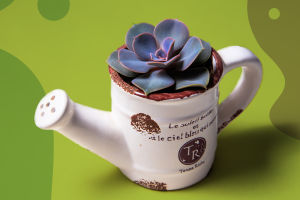Storing flowers in the refrigerator can significantly extend their lifespan, but the duration depends on several factors, including the type of flower, temperature settings, and humidity levels.
Generally, most cut flowers can last anywhere from a few days to several weeks when properly refrigerated.
This article explores the best practices for storing flowers and how long different varieties typically last.
Refrigeration slows down the natural aging process of flowers by reducing the metabolic activity and transpiration rate.
Ideally, the refrigerator temperature should be set between 34°F and 36°F (1°C to 2°C), which mimics the cooler temperatures of a flower’s natural environment. It's important to avoid placing flowers near fruits and vegetables, as they emit ethylene gas, which can accelerate wilting and decay.
Most cut flowers can be stored for about a week to ten days in the refrigerator. For instance, roses and lilies generally last around 7 to 12 days, while tulips can thrive for about 5 to 10 days.
On the other hand, hardy flowers like chrysanthemums and carnations may last up to two weeks under ideal conditions.
To maximize their freshness, it’s crucial to prepare flowers before refrigeration. Start by trimming the stems at a 45-degree angle to enhance water absorption.
Remove any leaves that would be submerged in water to prevent bacterial growth. Place the flowers in a clean vase filled with water, ideally mixed with floral preservative to provide nutrients and inhibit bacteria.
While refrigeration is beneficial, it’s not suitable for all types of flowers. Delicate varieties like peonies and hyacinths may not fare well in cold environments and can suffer from chilling injuries, which lead to browning petals and shortened lifespan.
In contrast, hardy blooms like daisies and zinnias can handle the cold much better.
Storage duration can also be influenced by flower stage at the time of refrigeration. Flowers that are still in bud form tend to last longer than fully bloomed flowers.
This is because they have not yet exhausted their energy reserves and are less prone to wilting.
Another factor to consider is humidity. Flowers prefer a humid environment, and a refrigerator can be dry. To mitigate this, you can place a small dish of water in the fridge alongside the flowers or use a vase with a lid to maintain moisture levels.
However, be careful not to overdo it, as excessive moisture can lead to mold and decay.
If you're planning to store flowers for an extended period, consider using the freezer instead. While this may seem counterintuitive, certain flowers can be preserved through freezing.
However, this method is best suited for specific types like lavender or rose petals, which can be dried and stored for use in crafts or cooking.
Flowers can typically be stored in the refrigerator for up to two weeks, depending on their type and the conditions. By following proper preparation and storage techniques, you can enjoy fresh blooms longer.
However, always be mindful of the specific needs of each flower variety to ensure they remain vibrant and beautiful for as long as possible.


